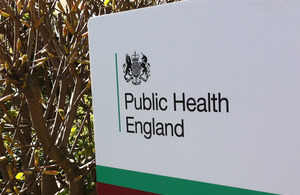Regulatory alert to charities - safeguarding
The Charity Commission (‘the Commission’), the independent regulator of charities in England and Wales, is issuing this alert to charities as regulatory advice under section 15(2) of the Charities Act 2011.
It has published this alert to charities following a number of serious incidents reported to the Commission, and recent public interest about accusations of harassment in the work place, including media reporting about some safeguarding incidents which have affected charity beneficiaries, charity workers or other persons coming into contact with charities.
The Charity Commission’s recently updated safeguarding strategy makes clear that safeguarding should be a key governance priority for all charities, not just those working with groups traditionally considered at risk.
Everybody has the right to be safe, no matter who they are or what their circumstances are, and the public expects charities, quite rightly, to be safe and trusted places.
We are reminding charities of the importance of:
- providing a safe and trusted environment which safeguards anyone who comes into contact with it including beneficiaries, staff and volunteers
- setting an organisational culture that prioritises safeguarding, so that it is safe for those affected to come forward and report incidents and concerns with the assurance they will be handled sensitively and properly
- having adequate safeguarding policies, procedures and measures to protect people
- providing clarity as to how incidents and allegations will be handled should they arise, including reporting to the relevant authorities, such as the Commission.
The Commission’s guidance makes clear that:
- trustee duties include avoiding exposing the charity’s assets, beneficiaries or reputation to undue risk - this means taking reasonable steps to protect beneficiaries, employees and volunteers from harm
- on occasion, charities may be targeted by people who abuse their position and privileges to gain access to vulnerable people or their records for inappropriate or illegal purposes - trustees must be alert to this risk and the need to manage it
- safeguarding goes beyond preventing physical abuse, and includes protecting people from harm generally, including neglect, emotional abuse, exploitation, radicalisation, and the consequences of the misuse of personal data
Trustees need to be satisfied that there are clear lines of responsibility and accountability for safeguarding, in particular when working with other organisations to deliver services to their beneficiaries. Trustees should be satisfied that any partner organisation has in place adequate safeguarding arrangements, including appropriate policies and mechanisms to provide assurance on compliance. This is particularly relevant for charities which undertake overseas humanitarian or development work with affiliates or in a confederated structure.
If something goes wrong in a charity, the trustees are accountable and the Commission expects the trustees to take responsibility for putting things right. This is why trustees should assure themselves that their safeguarding practices are robust. If there are concerns about this or about how issues may have been dealt with in past, trustees should carry out a formal review, including on the adequacy and robustness of the charity’s safeguarding measures, procedures and policies.
Trustees are advised to ensure that their charities:
- undertake a thorough review of their charity’s safeguarding governance and management arrangements and performance if one has not been recently conducted within the last 12 months
- contact the Commission about safeguarding issues, or serious safeguarding incidents, complaints or allegations which have not previously been disclosed to the charity regulator
Failures by trustees to manage safeguarding risks would be of serious regulatory concern to the Commission. We may consider this to be misconduct and/or mismanagement in the administration of the charity and it may also be a breach of trustee duty.
How to ensure you protect your beneficiaries and others that come into contact with your charity
Specifically, our advice is trustees need to:
- know your duties and responsibilities – under charity law but also under other specific statutory duties or guidance which apply because of the type of work your charity undertakes
- ensure adequate measures are in place to assess and address safeguarding risks
- put in place adequate safeguarding policies and procedures, including relevant HR matters, appropriate for your charity’s particular circumstances and which reflect both the law and best practice
- make sure your charity’s policies and procedures are effectively applied in practice
- ensure there are mechanisms in place which provide trustees with assurance about your charity’s compliance with those policies and procedures
- ensure those safeguarding policies, practice, and performance are robustly and regularly reviewed to ensure they are up to date and fit for purpose
- actively promote a safe culture and strong awareness of everyone’s safeguarding responsibilities in your charity
- take steps to help deter and prevent safeguarding issues from occurring
- ensure there are mechanisms in place to promptly identify and act upon emerging safeguarding trends or issues
- ensure that serious incidents are reported to the Commission in accordance with its guidance and that safeguarding allegations, complaints or incidents are reported to other agencies in accordance with the law and best practice
The measures in place should be proportionate to the size of the charity and the risks arising from the charity’s activities.
For further advice and sources of guidance:
Published 19 December 2017












